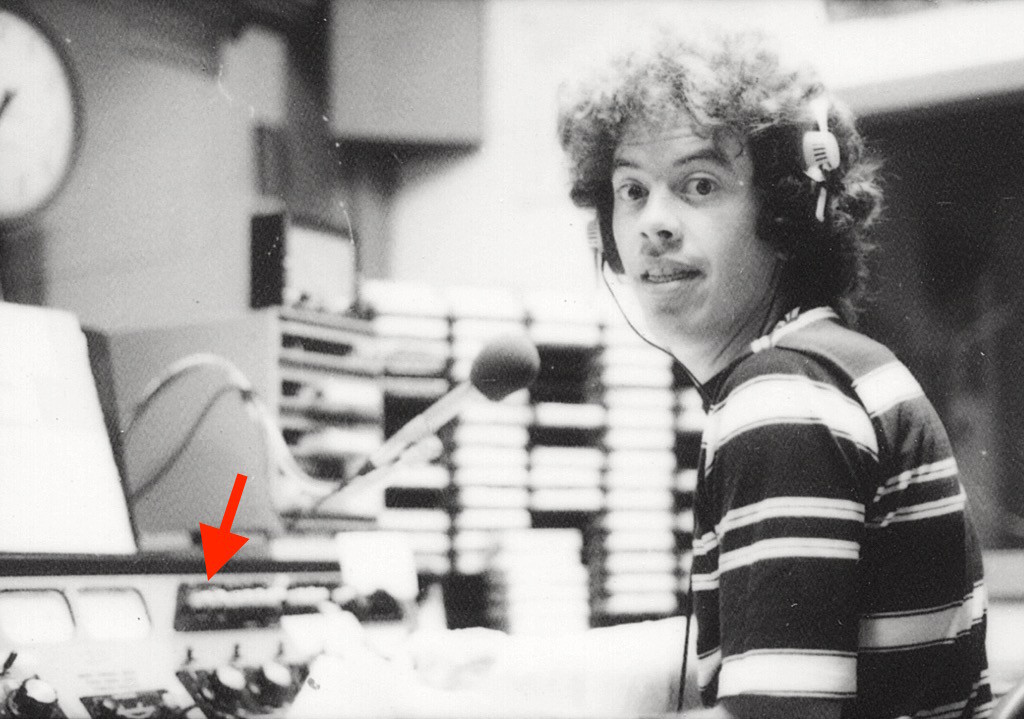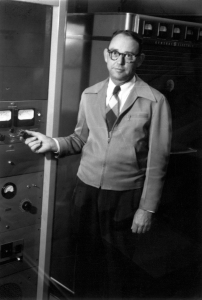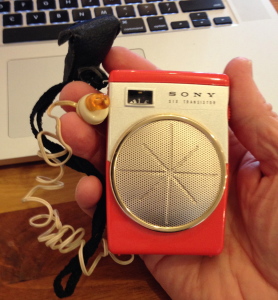In late summer of 1972 I had been “promoted” from baby-sitting the automation that ran our FM radio station to a live shift (3-7 p.m.) on the AM station. I had recorded weather reports for the FM station but being on the air live was intimidating.
Our stations had no affiliation with national news networks so our only source was the Associated Press wire. Every hour the AP teletype would spit out a national news summary, timed to run about five minutes for a typical reader. At our little stations, the announcer on duty did everything, including reading the news at the top of the hour.

At precisely the top of the hour, the FM automation stopped cold for exactly five minutes. The person “running the board” on the AM would throw a switch that “simulcast” the two stations for those five minutes so the same live newscast could go out on both the AM and the FM. At precisely five minutes past the top of the hour, you throw the switch back as the FM automation takes over again.
I found this procedure challenging. More accurately, I found the last 30 seconds challenging. If you were in the middle of longer story you had to find a place to break in order to “make the join.”
After a week or two I started getting comfortable with this operation and then one day I finished reading the news — every story — and looked up at the clock and saw that I was a minute early. I couldn’t flip the switch to send the FM back to automation because it would result in a minute of dead air. The Ultimate Sin for new radio guys.
I don’t remember how I filled that minute. Probably with weather, maybe a couple of “community highlights.” All I really remember was the knot in my stomach and the sense of time dilation.
It’s unlikely that I’ll ever be in a situation where I have to “fill” for a minute. But if I am, I’m going to tell this story.


 “Just as newspapers fell off a cliff, radio is about to follow. It’s going to happen faster than anyone expects. And of course, it will be replaced by a new thing, a long tail of audio that’s similar (but completely different) from what we were looking for from radio all along. And that audience is just waiting for you to create something worth listening to.”
“Just as newspapers fell off a cliff, radio is about to follow. It’s going to happen faster than anyone expects. And of course, it will be replaced by a new thing, a long tail of audio that’s similar (but completely different) from what we were looking for from radio all along. And that audience is just waiting for you to create something worth listening to.” “Transistors were being sold in 1954 to the military for about $16 apiece. But in order to break into the consumer marker. Haggerty insisted that his engineers find a way to make them so that they could be sold for less than $3. They did. He also developed a Jobs-like knack, which would serve him then and in the future, for conjuring up devices that consumers did not yet know they needed but would soon find indispensable. In the case of the transistor, Haggerty came up with the idea of a small pocket radio. When he tried to convince RCA and other big firms that made tabletop radios to become a partner in the venture, they pointed out (rightly) that consumers were not demanding a pocket radio. But Haggerty understood the importance of spawning new markets rather than merely chasing old ones. He convinced a small Indianapolis company that built TV antenna boosters to join forces on what would be called the Regency TR-1 radio. Haggerty made the deal in June 1954 and, typically, insisted that the device be on the market by that November. It was. The Regency radio, the size of a pack of index cards, used four transistors and sold for $49.95. It was initially marketed partly as a security item, now that the Russians had the atom bomb. “In event of an enemy attack, your Regency TR-1 wiU become one of your most valued possessions,” the first owner s manual declared. But it quickly became an object of consumer desire and teenage obsession. Its plastic case came, iPod-like, in four colors: black, ivory, Mandarin Red, and Cloud Gray. Within a year, 100,000 had been sold, making it one of the most popular new products in history.”
“Transistors were being sold in 1954 to the military for about $16 apiece. But in order to break into the consumer marker. Haggerty insisted that his engineers find a way to make them so that they could be sold for less than $3. They did. He also developed a Jobs-like knack, which would serve him then and in the future, for conjuring up devices that consumers did not yet know they needed but would soon find indispensable. In the case of the transistor, Haggerty came up with the idea of a small pocket radio. When he tried to convince RCA and other big firms that made tabletop radios to become a partner in the venture, they pointed out (rightly) that consumers were not demanding a pocket radio. But Haggerty understood the importance of spawning new markets rather than merely chasing old ones. He convinced a small Indianapolis company that built TV antenna boosters to join forces on what would be called the Regency TR-1 radio. Haggerty made the deal in June 1954 and, typically, insisted that the device be on the market by that November. It was. The Regency radio, the size of a pack of index cards, used four transistors and sold for $49.95. It was initially marketed partly as a security item, now that the Russians had the atom bomb. “In event of an enemy attack, your Regency TR-1 wiU become one of your most valued possessions,” the first owner s manual declared. But it quickly became an object of consumer desire and teenage obsession. Its plastic case came, iPod-like, in four colors: black, ivory, Mandarin Red, and Cloud Gray. Within a year, 100,000 had been sold, making it one of the most popular new products in history.”